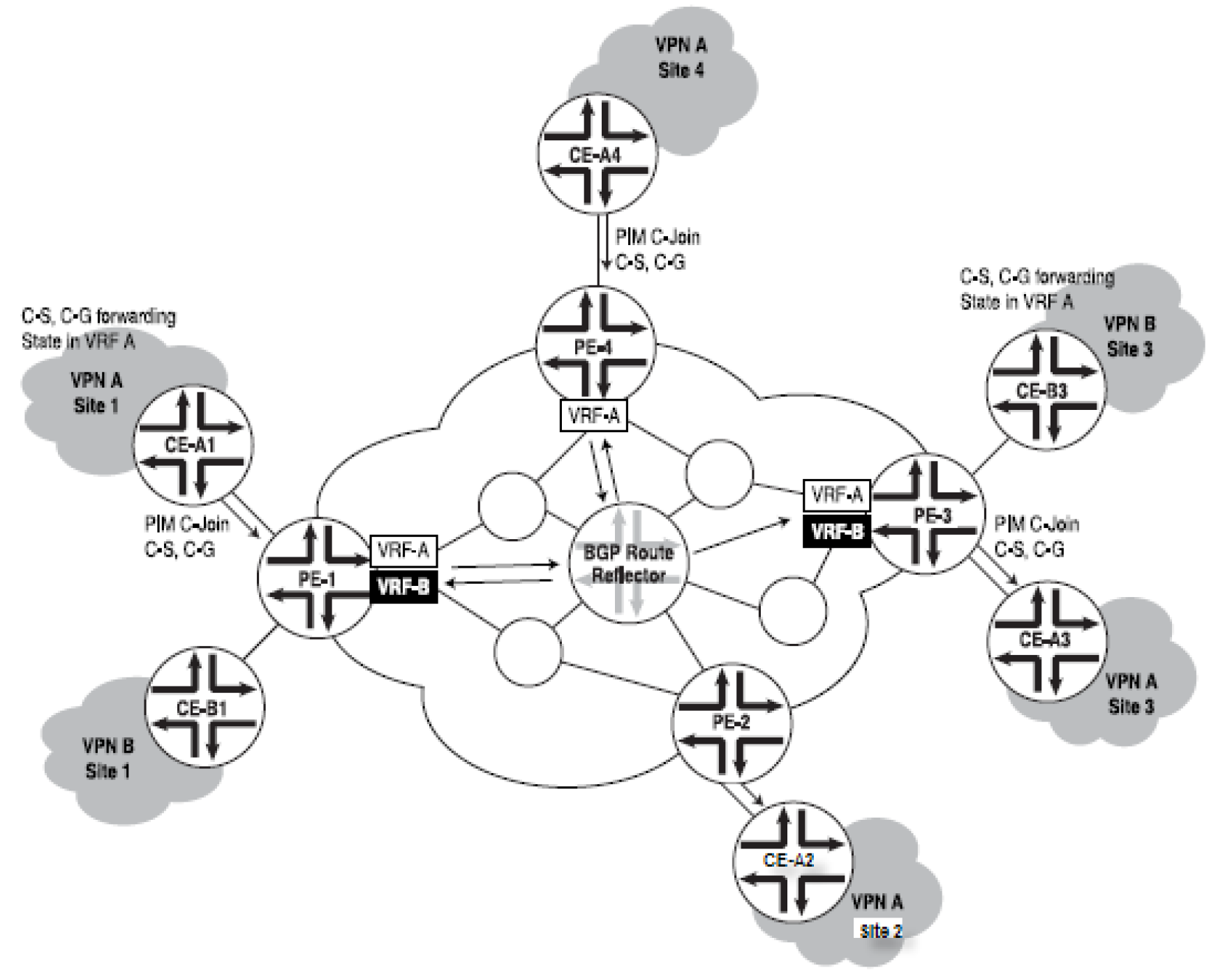Two types of signaling support NG MVPNs:
-
Interior BGP (iBGP) is extended to support multicast VPN for MPLS service signaling.
-
Provider-tunnel (P-tunnel) signaling is used at the transport layer to carry multicast traffic. The Juniper-based implementation of NG MVPN uses the point-to-multipoint (P2MP) LSP for the P-signaling. The P2MP LSP is signaled by Resource Reservation Protocol with traffic engineering extensions (RSVP-TE).
Topology example for multicast VPN shows both unicast and multicast VPN traffic in an MPLS network.
.Figure 1. Topology example for multicast VPN 
Figure 38 shows a network where Customer A has unicast traffic between all sites and multicast traffic between sites 1, 3, and 4. If PE-1 is an ingress edge router for Customer A, unicast traffic from CE-A1 will be forwarded to one of the egress PEs. Multicast traffic, however, will be forwarded to all or some PEs, depending on how the multicast VPN is constructed.
A multicast VPN is also constructed by a route target (RT). Both multicast VPN and unicast VPN for a customer may be constructed by the same RT, or the multicast VPN may be constructed by a different RT for the same customer.